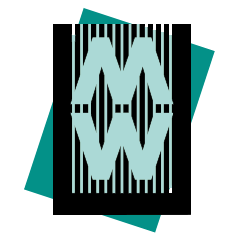What’s right with this Picture – How a graphical interface for modern art is meeting the touch of non-sighted visitors.
Sina Bahram, Prime Access Consulting, Inc., USA, Peter Samis, SFMOMA, USA, Thomas Ryun, Belle & Wissell, Co., USA, Scott Thiessen, Belle & Wissell, Co., USA
Published paper: Completing the picture: how a graphical interface for understanding Modern art is meeting the touch of non-sighted visitors
Building on the landmark work done by the Canadian Museum of Human Rights (Wyman et al., 2016), the San Francisco Museum of Modern Art (SFMOMA) engaged the services of Sina Bahram from Prime Access Consulting (PAC) as the museum prepared digital interpretive programs for the re-opening of its new and expanded building. Together with interactive design partners Belle & Wissell, Co. we asked a critical question: how can we make the fundamentally visual experiences we were designing for our new Painting & Sculpture Interpretive Gallery equally available and engrossing to a non-sighted audience?
Our goal was twofold:
1. To make large touchscreen graphical user interfaces accessible to the blind and vision-impaired;
2. To convey a sense of the artworks in the galleries, both in their visual aspect and the stories that inform them, to this same audience.
By adding a bespoke digital talking overlay on top of the visual interface and following best practices laid out by Apple, Microsoft, et al. on their touch platforms, we created an approach that allows for an equitable experience for eyes-free audiences while still allowing us to achieve the full design vision for the experience.
This paper describes the following:
• Which design and pre-implementation considerations were made to help ensure an inclusive experience;
• How a complex, visually rich graphical user interface (GUI) was transformed into a series of single-finger interactions in an equivalent and parallel audio environment;
• What was required in both the technology implementation and the authoring platform within the content management system (CMS);
• Implications of eyes-free use for physical design;
• Implications of low-vision use, and use in tandem with a sighted companion, for visual design;
• The content-related task of producing over 100 audio descriptions for artworks and visual ephemera in the wall and table stories;
• Potential benefits to all visitors and to the museum’s institutional knowledge about its collection thanks to this initiative.
Bibliography:
Jacob O. Wobbrock, Brad A. Myers, and John A. Kembel. 2003. EdgeWrite: a stylus-based text entry method designed for high accuracy and stability of motion. In Proceedings of the 16th annual ACM symposium on User interface software and technology (UIST '03). ACM, New York, NY, USA, 61-70.
Kane, S.K., Bigham, J.P. and Wobbrock, J.O. (2008). Slide Rule: making mobile touch screens accessible to blind people using multi-touch interaction techniques. Proceedings of ASSETS '08, ACM, 73-80.
Kane, Shaun K., Meredith Ringel Morris, Annuska Z. Perkins, et al., “Access Overlays: Improving Non-Visual Access to Large Touch Screens for Blind Users.” UIST’11, October 16–19, 2011. Consulted Sept. 25, 2016. http://research.microsoft.com/en-us/um/people/merrie/papers/access_overlays.pdf
“Museums and Accessibility.” Museum magazine special issue. 94, 5 (Sept-Oct. 2015).
“Museums and Accessibility.” Museum magazine special issue. 94, 5 (Sept-Oct. 2015).
Wyman, Bruce, Corey Timpson, Scott Gillam and Sina Bahram. "Inclusive design: From approach to execution." MW2016: Museums and the Web 2016. Published February 24, 2016. Consulted September 24, 2016. http://mw2016.museumsandtheweb.com/paper/inclusive-design-from-approach-to-execution/
Samis, P. and M. Michaelson, Creating the Visitor-Centered Museum. London and New York: Routledge, 2016.
Timpson, C. and J. Trevira, Establishing Sound Practice: Ensuring Inclusivity with Media Based Exhibitions. In Museums and the Web 2013, N. Proctor & R. Cherry (eds). Silver Spring, MD: Museums and the Web. Published February 11, 2013. Consulted September 24, 2016 September 25, 2016. http://mw2013.museumsandtheweb.com/paper/establishing-sound-practice-ensuring-inclusivity-with-media-based-exhibitions/
